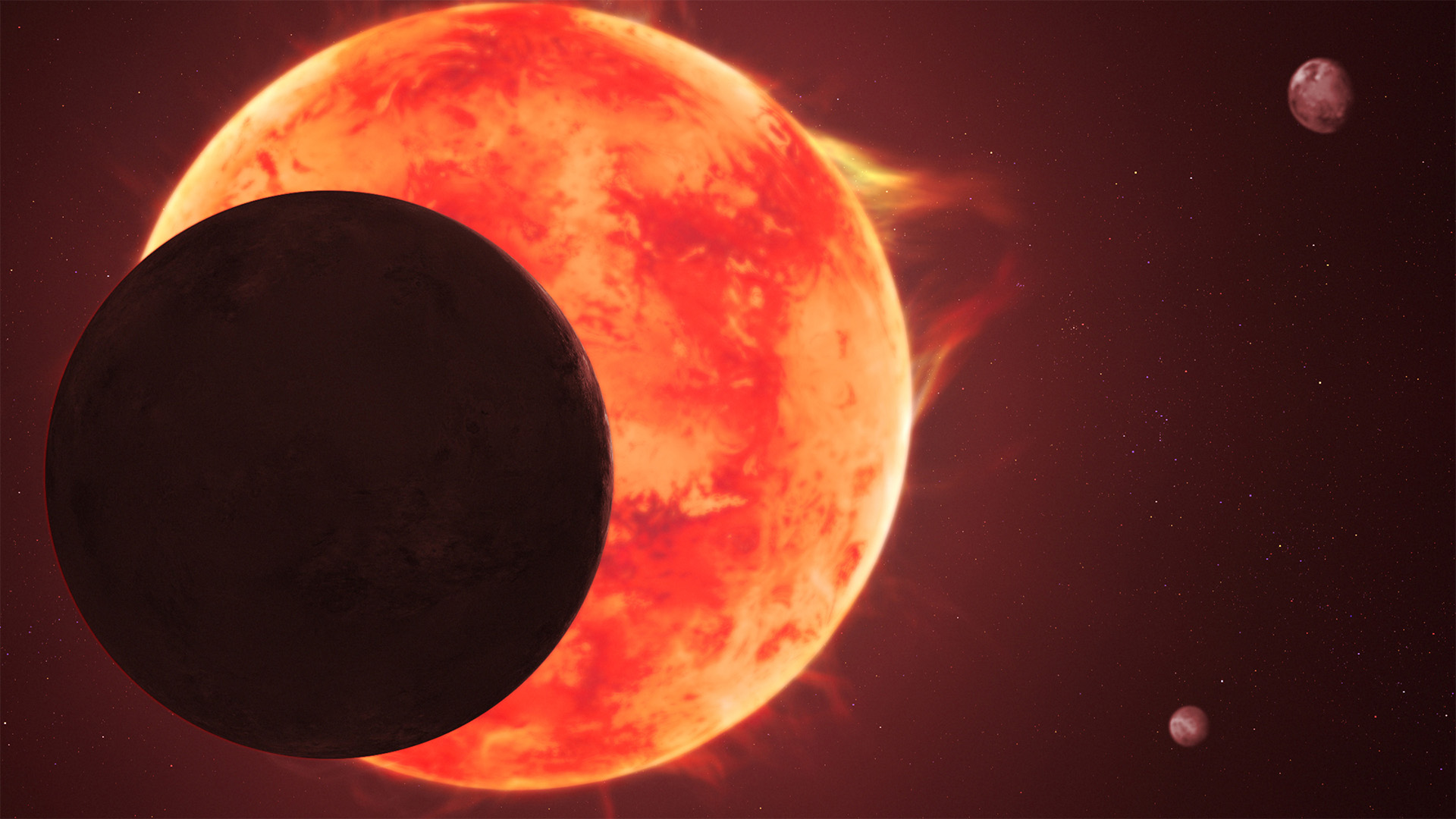There’s bad news for our hopes of habitable planets existing around TRAPPIST-1, with the James Webb Space Telescope (JWST) finding no evidence for an Earth-like atmosphere on a third world orbiting the red dwarf.
However, that still leaves four other planets in orbit around TRAPPIST-1 that could be habitable, with at least two or three of them in what is regarded as the “habitable zone” where temperatures would be suitable for liquid water to exist —- assuming an Earth-like atmosphere that can retain heat.
Previously, the James Webb Space Telescope (JWST) had failed to find evidence for an atmosphere around the two innermost planets in the TRAPPIST-1 system, world TRAPPIST-1b and TRAPPIST-1c. Now, we can add the next planet out, TRAPPIST-1d, to the list.
“Ultimately, we want to know if something like the environment we enjoy on Earth can exist elsewhere, and under what conditions,” Caroline Piaulet-Ghorayeb of the University of Chicago and the Trottier Institute for Research on Exoplanets (IREx) at Université de Montréal, said in a statement. “At this point, we can rule out TRAPPIST-1d from a list of potential Earth twins or cousins.”
All seven planets of the TRAPPIST-1 system are seen transiting, or passing in front of, their star. Although not even the JWST can see the silhouette of the transiting planet, it can detect where the star’s light has been absorbed by molecules in the planet’s atmosphere during the transit. This is called transmission spectroscopy.
Yet, despite using the JWST’s sensitive Near-Infrared Spectrometer, or NIRSpec, astronomers led by Piaulet-Ghorayeb found no evidence for water, methane or carbon dioxide, all of which are common in Earth’s atmosphere and which act as natural greenhouse gases to retain heat and keep a planet warm enough for liquid water.
“There are a few potential reasons why we don’t detect an atmosphere around TRAPPIST-1d,” said Piaulet-Ghorayeb. “It could have an extremely thin atmosphere that is difficult to detect, somewhat like Mars. Alternatively, it could have very thick, high-altitude clouds that are blocking our detection of specific atmospheric signatures — something more like Venus. Or, it could be barren rock, with no atmosphere at all.”
The problem that the TRAPPIST-1 planets collectively face is their star. Red dwarfs, small and cool, seem at first glance to be unthreatening, but in reality they are tumultuous with frequent violent outbursts of radiation. These repeated flares can strip an atmosphere from a world a piece at a time. It is quite possible that this is the fate that has befallen TRAPPIST-1b, c and d. In particular, planet d seems like a real blow to our hopes of finding a world with an Earth-like atmosphere around TRAPPIST-1 because it resides on the inner edge of the system’s habitable zone. That said, so does Venus in our solar system, and a Venus-like planet is still on the table. And there are four other planets still to go.
“All hope is not lost for atmospheres around the TRAPPIST-1 planets,” said Piaulet-Ghorayeb. “While we didn’t find a big, bold atmospheric signature for planet d, there is still potential for the outer planets to be holding onto a lot of water and other atmospheric components.”
Planets e and f are definitely in the star’s nominal habitable zone, g is at the outer edge like Mars is in our solar system, while planet h is beyond the habitable zone and will be almost certainly too cold to support an Earth-like atmosphere.
However, probing whether any of these outer planets has an atmosphere is more difficult. Their greater distance from their star means any spectral signature is weaker, perhaps too weak even for the JWST to detect.
But even if all the worlds around TRAPPIST-1, which is 40 light-years away, prove to be a bust, there are many more fish in the sea. Red dwarf stars are by far the most common type of star, making up about three-quarters of all stars in the Milky Way galaxy, and there are numerous other interesting planets around other red dwarfs, such as Teegarden’s Star b, LHS 1140b and even Proxima Centauri b, even though the latter does not transit. And the search continues for rocky planets in the habitable zone of more sun-like stars — a search that the European Space Agency’s PLATO mission, currently set to launch in December 2026, will accelerate.
The latest news regarding the search for an atmosphere around TRAPPIST-1d was published on Aug. 13 in The Astrophysical Journal.
